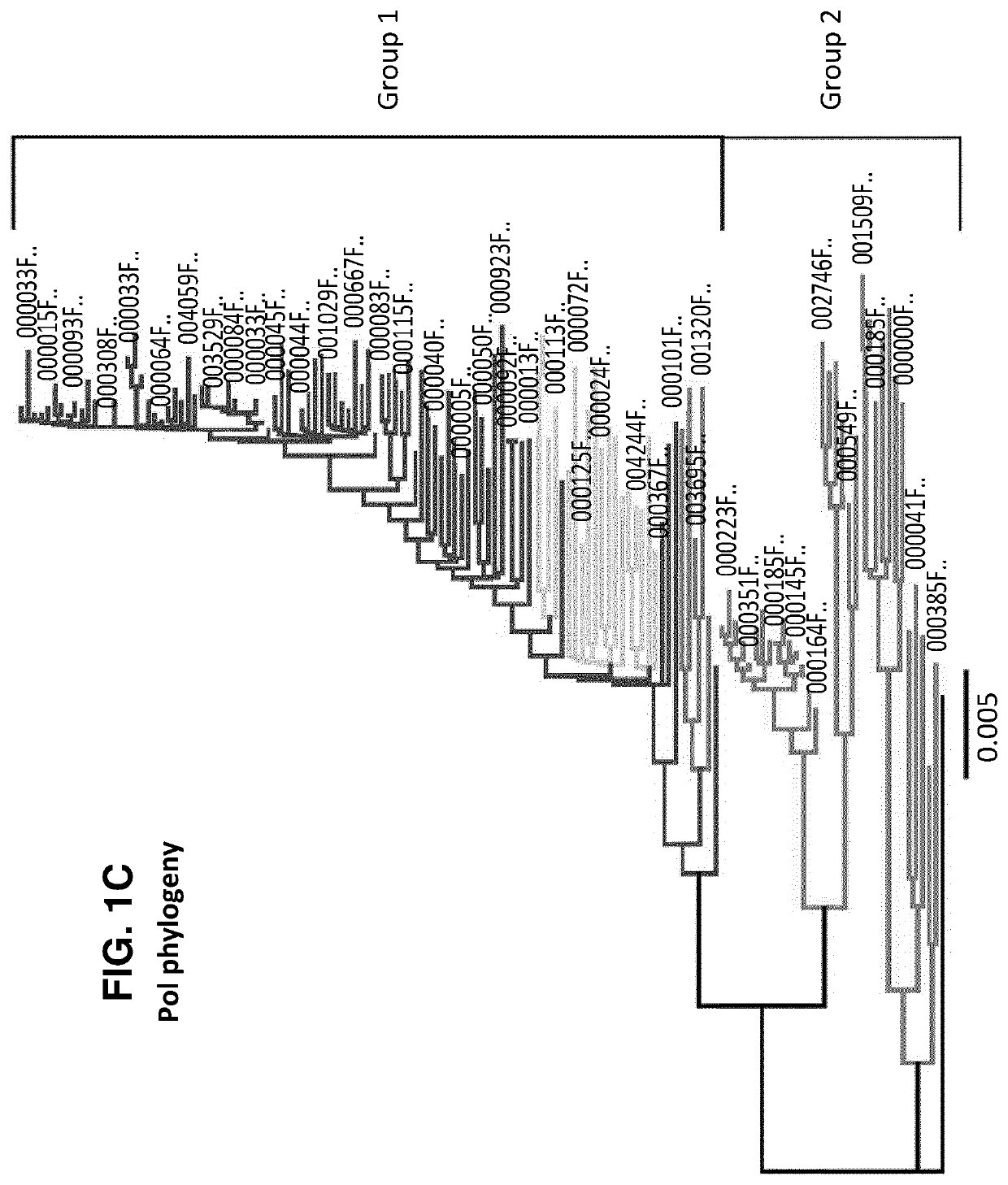Characterization and inactivation of endogenous retroviruses in chinese hamster ovary cells
- Summary
- Abstract
- Description
- Claims
- Application Information
AI Technical Summary
Benefits of technology
Problems solved by technology
Method used
Image
Examples
Embodiment Construction
[0060]A cell, preferably a mammalian cell / eukaryotic cell, that according to the present invention includes an engineered cell, is capable of being maintained under cell culture conditions. Standard cell culture conditions are from 30 to 40° C., preferably at or at about 37° C., for instance in fully synthetic culture medium as used in the production of recombinant proteins. Non-limiting examples of this type of cell are non-primate eukaryotic cells such as Chinese hamster ovary (CHOs) cells including the CHO-K1 (ATCC CCL 61), DG44 and CHO-S cells and SURE CHO-M cells (derivative of CHO-K1), and baby hamster kidney cells (BHK, ATCC CCL 10). Primate eukaryotic host cells include, e.g., human cervical carcinoma cells (HELA, ATCC CCL 2) and 293 [ATCC CRL 1573] as well as 3T3 [ATCC CCL 163] and monkey kidney CV1 line [ATCC CCL 70], also transformed with SV40 (COS-7, ATCC CRL-1587). The term engineered signifies that the genome of the cell has been altered, e.g., by insertion(s), deletio...
PUM
| Property | Measurement | Unit |
|---|---|---|
| Fraction | aaaaa | aaaaa |
| Fraction | aaaaa | aaaaa |
| Fraction | aaaaa | aaaaa |
Abstract
Description
Claims
Application Information
 Login to View More
Login to View More - R&D
- Intellectual Property
- Life Sciences
- Materials
- Tech Scout
- Unparalleled Data Quality
- Higher Quality Content
- 60% Fewer Hallucinations
Browse by: Latest US Patents, China's latest patents, Technical Efficacy Thesaurus, Application Domain, Technology Topic, Popular Technical Reports.
© 2025 PatSnap. All rights reserved.Legal|Privacy policy|Modern Slavery Act Transparency Statement|Sitemap|About US| Contact US: help@patsnap.com



